The Victorian era was characterized by progress, industrialization, and world travel. This rapid change created a longing for excess and the exotic but also a nostalgia for a time when things were simple and safe. Understanding these competing influences can help you appreciate the split personality of the Victorian garden.
On the one hand, you had rigid bed lines and geometric structure, with clipped evergreens and ornate topiary. These design elements represented the order, opulence, and restraint that once defined British society. On the other hand, you had a riot of color and plants from faraway lands, mingling recklessly with each other and spilling over their harsh borders. This represented an appreciation for creativity and a desire to break the rules.
The same philosophy and design elements apply to Victorian-style garden design today. If you own a Victorian home (identifiable by its high-pitched roof, ornate trim work, and colorful paint scheme), planning a period-appropriate garden can feel like a daunting task, even for a seasoned green thumb!
To help you make informed garden decisions, we’ve assembled a list of 21 plants that pair well with Victorian architecture and embrace the overarching philosophy of controlled chaos. Read on for a detailed look at their unique characteristics, preferences, and usage.
Boxwood
All traditional Victorian gardens begin and end with boxwood plants. Use the compact, shapeable shrubs to create borders, punctuate bed lines, and provide year-round evergreen structure.
Although they vary in size, color, and habit, all boxwoods have small, densely packed leaves for shearing into hedges, orbs, or topiary figures. Try ‘Franklin’s Gem’ or ‘Green Mound’ for orbs and ‘Green Velvet’ for hedges.
Chinese Juniper
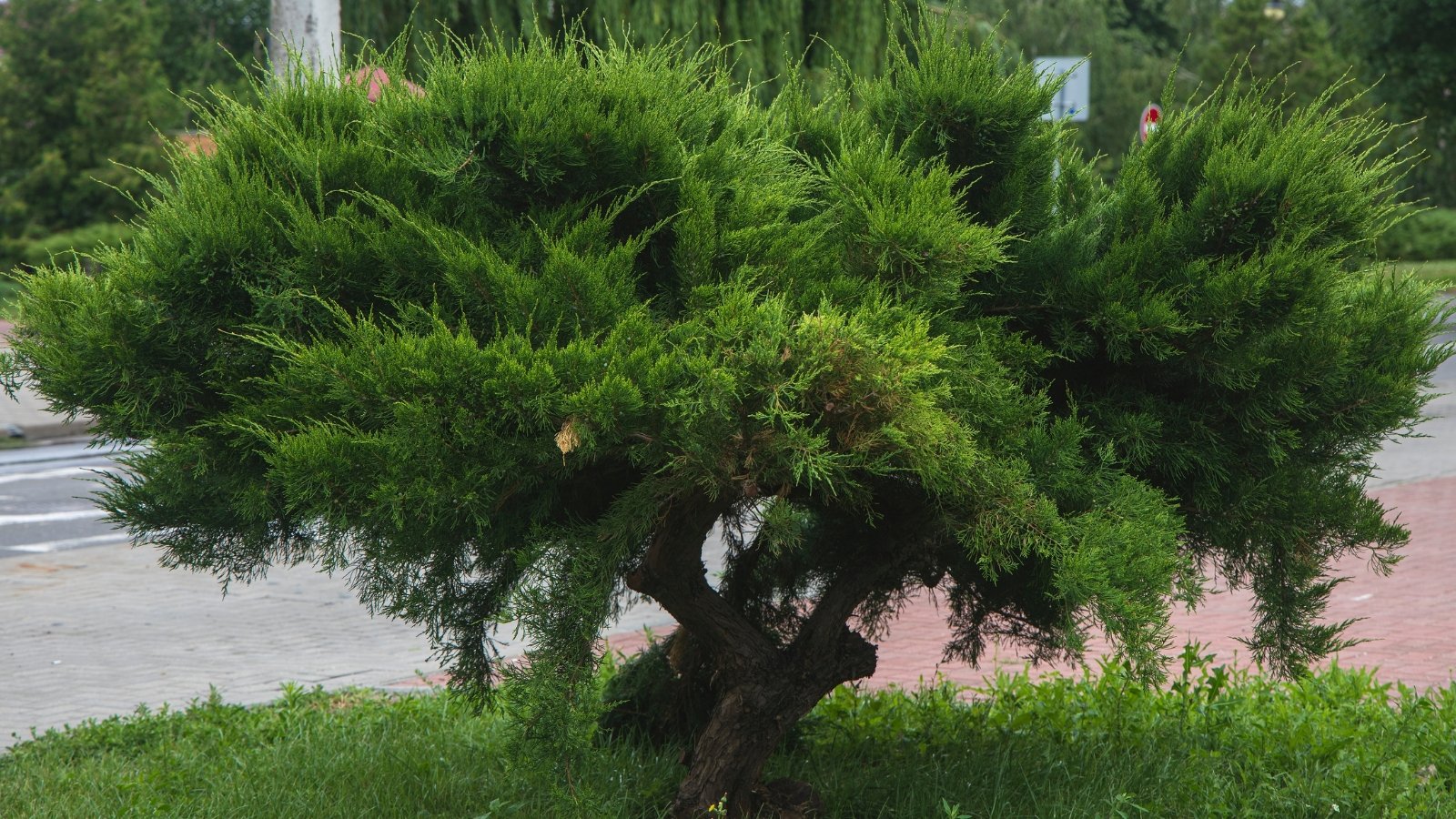

Use smaller species of this slow-growing conifer for specimen plants, hedge screens, or anchor points in a Victorian landscape. The foliage is dark green to sage blue in color and bushy in habit. It responds well to pruning and shaping, adapting to a spiral or pompon cut easily.
Juniper remains green in winter. It has a pleasant scent and produces small, blue-green berries that are attractive to birds. Plant ‘Skyrocket’ for tight rows and considerable height or ‘Spiral Blue Point’ for twisting whimsy.
Holly
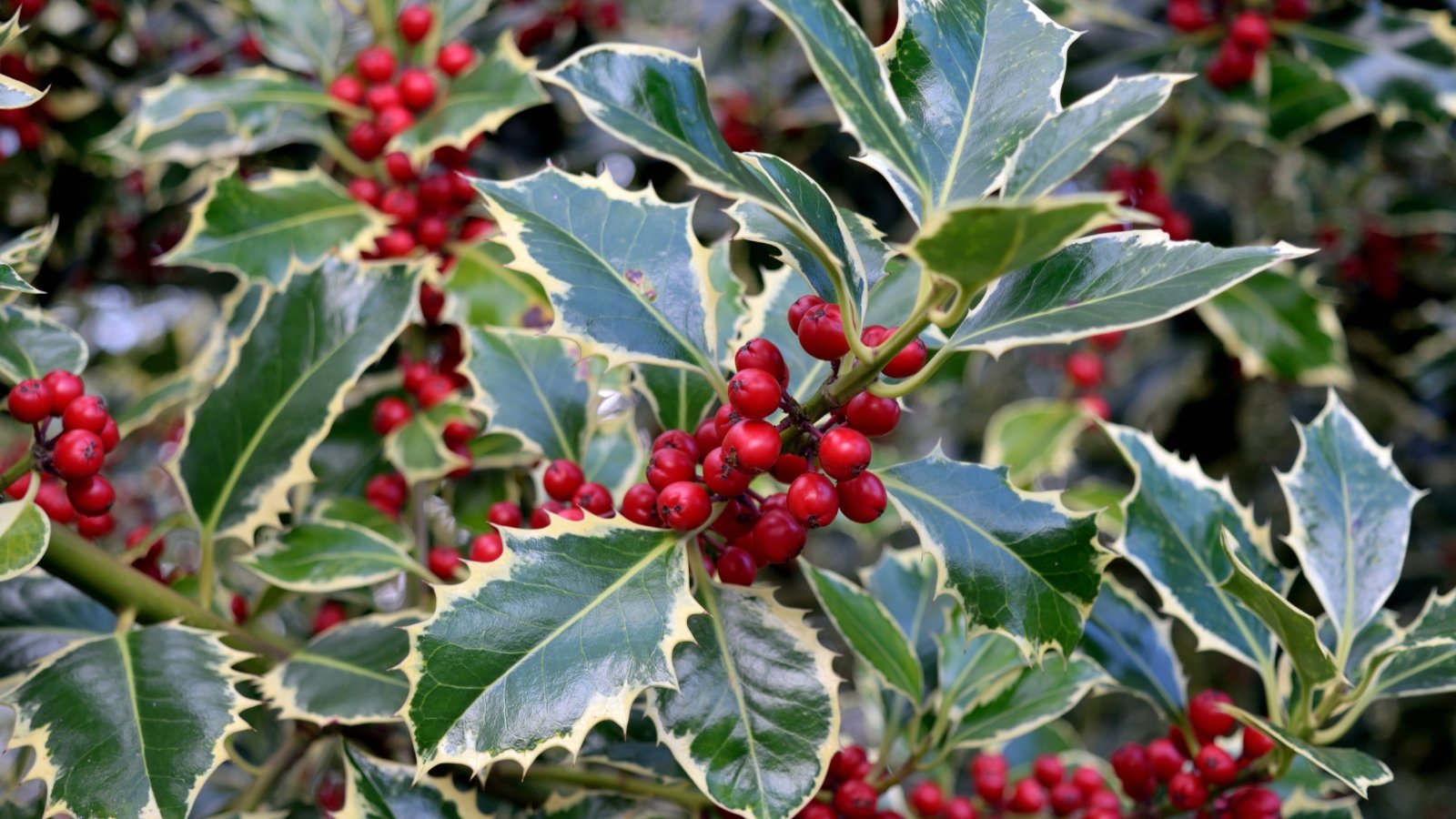

This flexible evergreen is a Victorian garden go-to for tall, narrow hedging. Its waxy, dark green leaves have prickly margins. Its branch structure is very dense, so it handles a flat prune quite well. Use it to create privacy or define a garden ‘room’ in traditional Victorian style.
Holly offers small white flowers in spring and prolific clusters of red berries in late summer. Berries will often persist long into the winter, giving this plant some vivid color and a heavy dose of Christmas charm. Plant ‘Marginata’ for yellow and green variegated foliage and 40-foot mature height.
This plant is classed as an invasive species in Oregon, California, and Alaska. It has also invaded Yosemite National Park and Redwood National Park. If you live in one of these areas, avoid planting or consult your extension office before purchasing and planting.
Crab
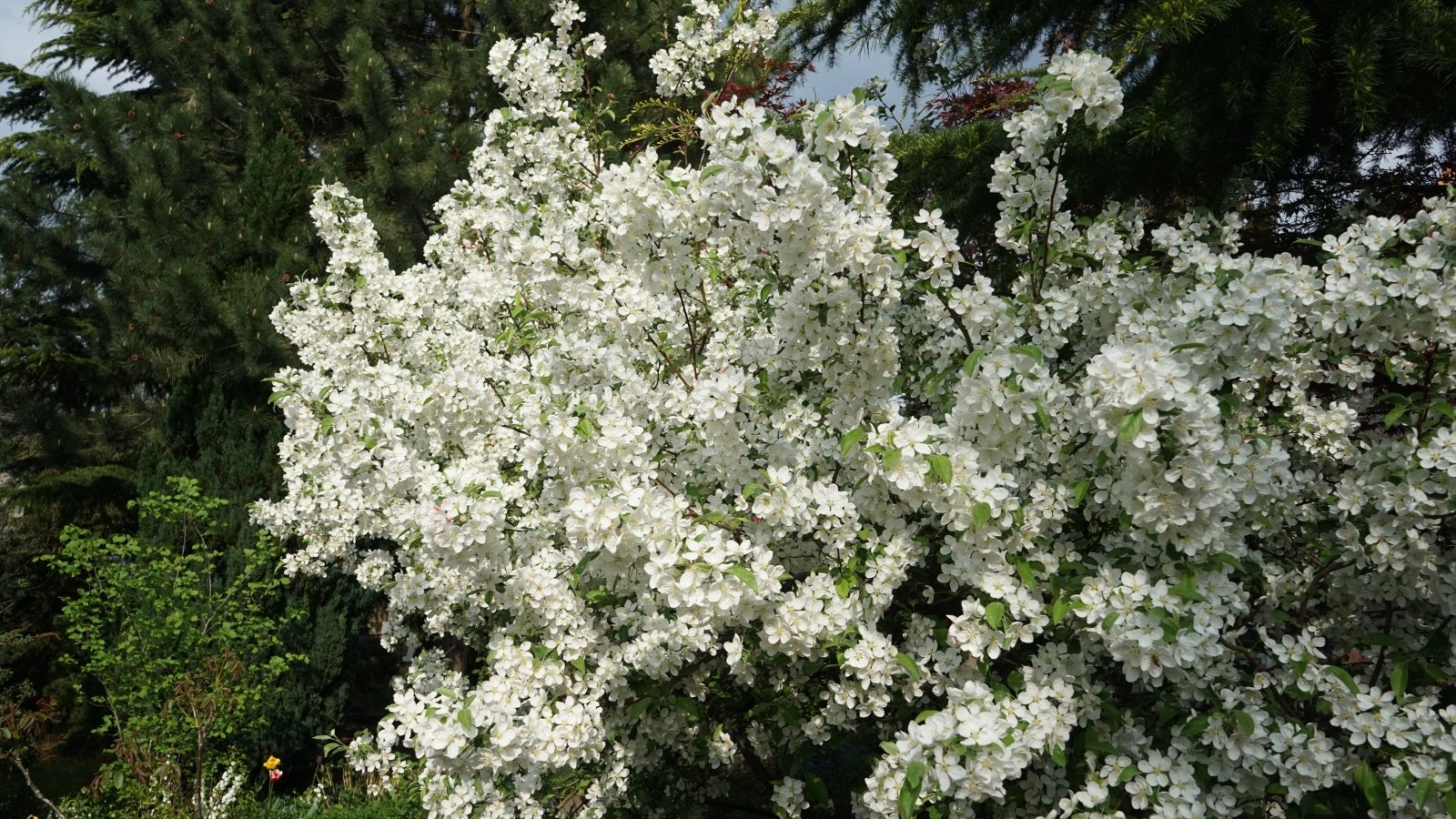

This flowering fruit tree was a popular choice for Victorian gardeners who wanted to try their hands at the emerging art of espalier. Simply put, this is the process of encouraging a tree or shrub to grow flat against a fence or hard wall. Because it freed up space and allowed for clean, straight lines, espaliered plants were a popular Victorian garden staple.
Crab trees take well to the controlled structure, offer an abundance of sweet-smelling flowers in spring, and produce edible fruit in fall. ‘Sargent’ is the most popular crab for espalier, maxing out at 12 feet and offering small white flowers and red fruit.
Dahlia
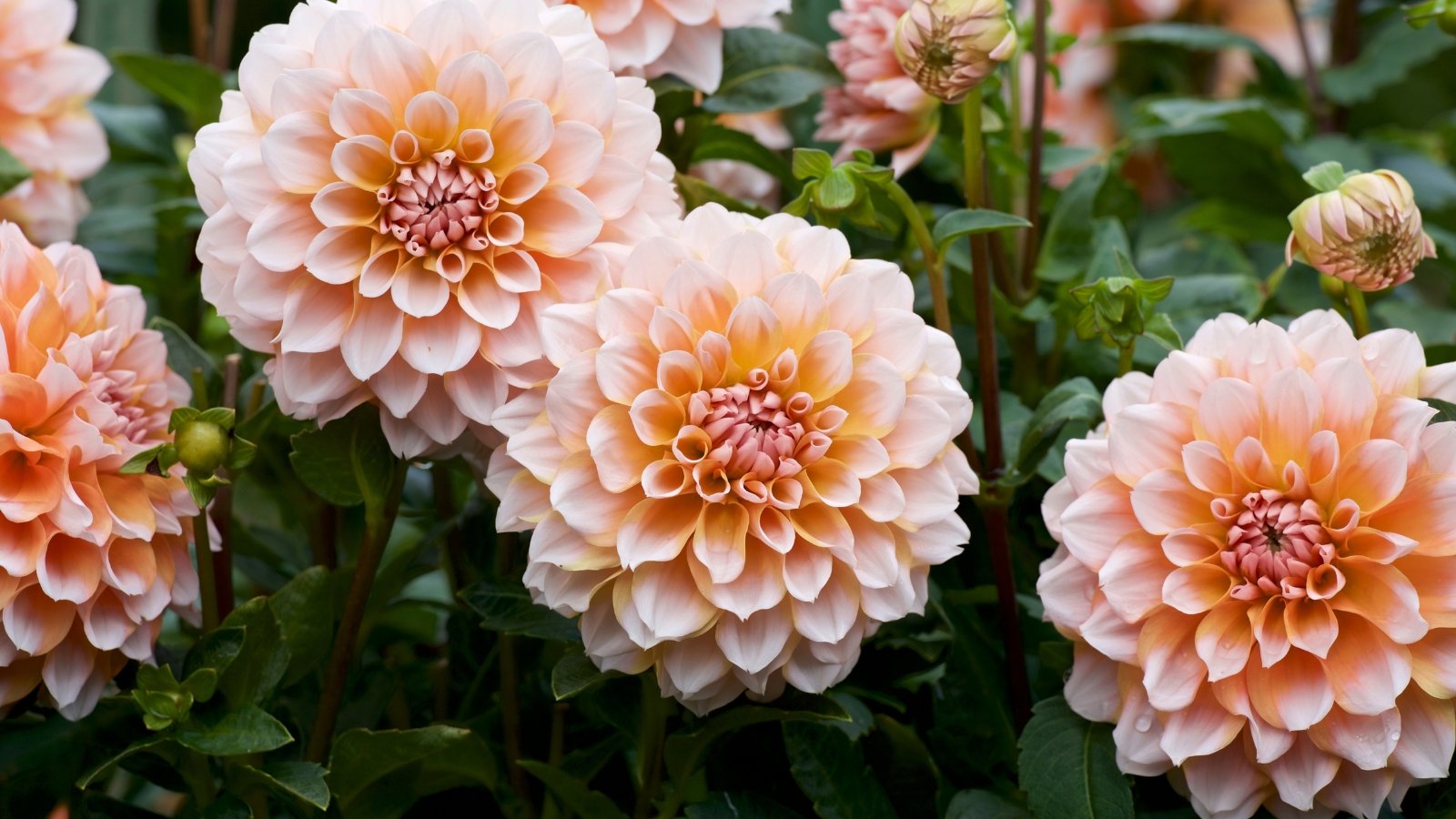

Native to Mexico and South America, the dahlia was a favorite in Victorian gardens looking to spotlight plants from exotic locations. Distinctly tropical, with a high tolerance for heat and drought, dahlias come in a broad spectrum of colors and a good range of heights.
Leggy and occasionally top-heavy, with some blooms spanning 12 inches in diameter, dahlia works well in the confines of an evergreen border such as boxwood. Its blooms last a long while in a vase, which makes them popular in the cutting garden. Almost any variety will do in a Victorian garden.
Geranium
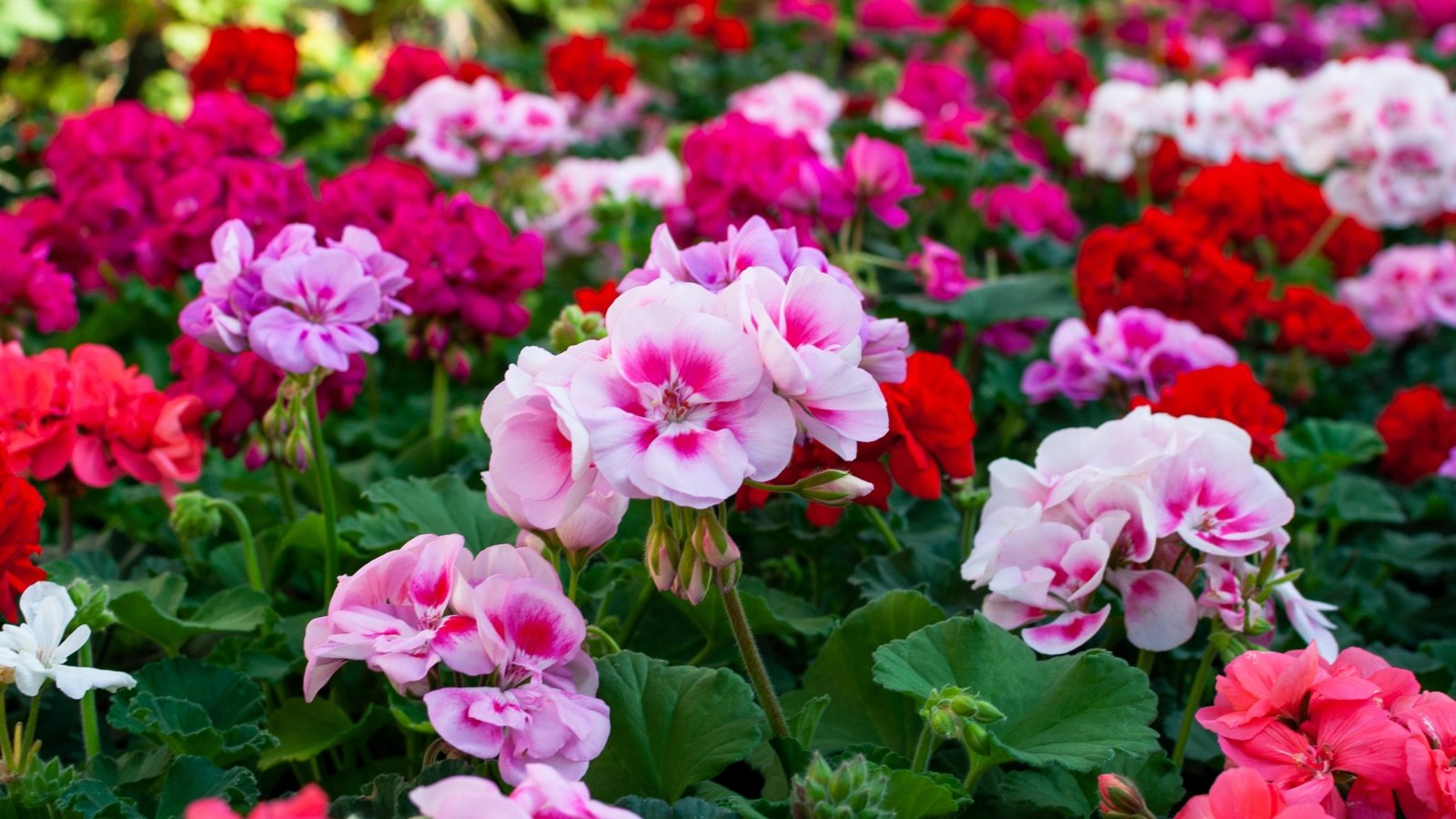

Native to Africa and Australia, annual geranium (not to be confused with perennial geranium, or ‘cranesbill’), was a Victorian garden staple. They offer season-long interest in a kaleidoscope of colors. Their whimsical, floppy habit looks lovely in the ground and in containers.
Geraniums are great for beginner gardeners because they are so easy to grow. They are not hardy, but you can bring them indoors for winter and put them back out each spring.
Petunia
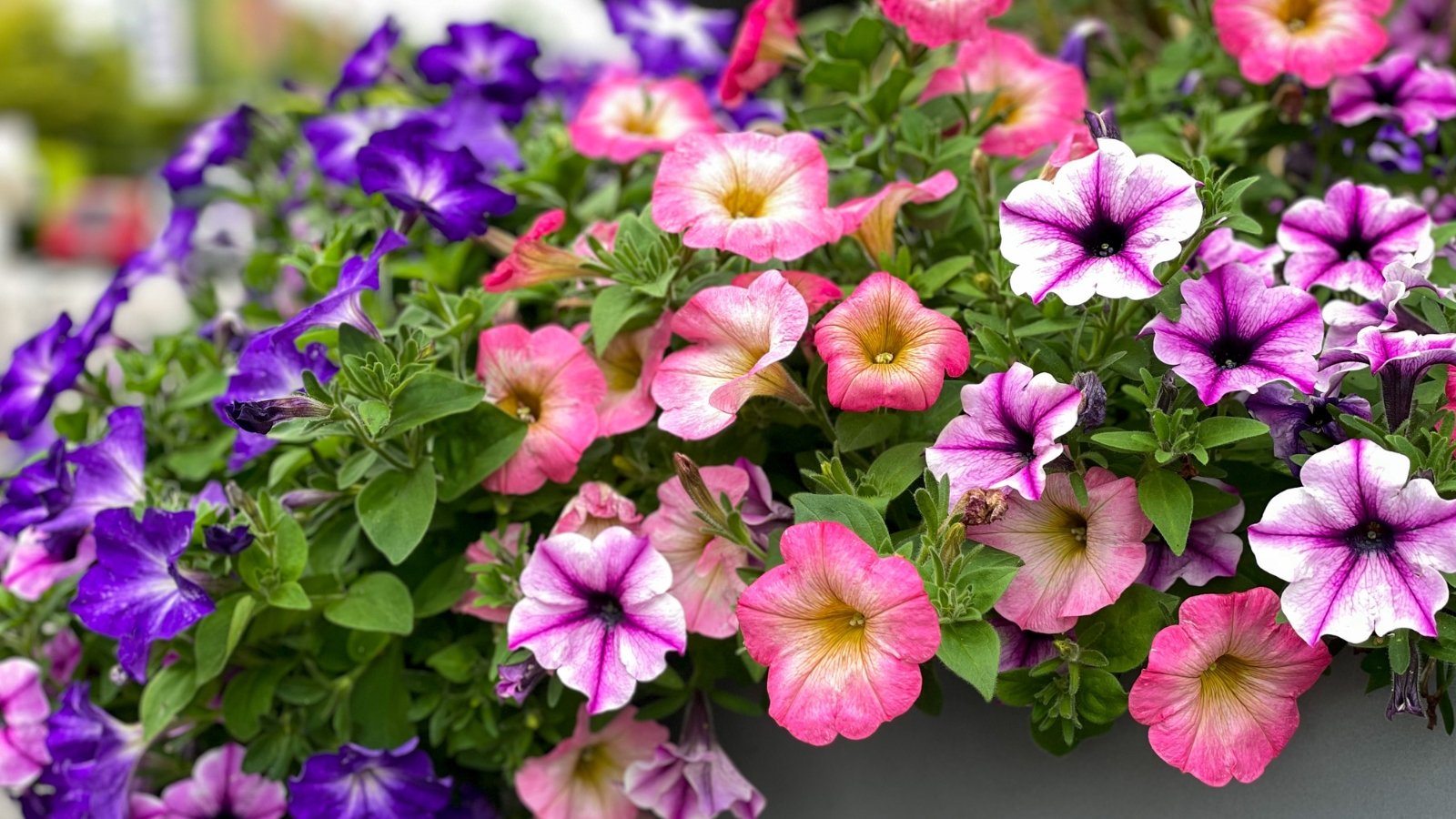

Symbolizing comfort, passion, and hope, the petunia is another Victorian favorite. Selectively hardy in zones 10 and 11, it’s considered an annual in most parts of the world. It’s grown easily by seed and produces a riot of color from spring to fall.
Its five-lobed, funnel-shaped flowers spill nicely out of a raised bed or garden urn, offering volume and classic flower joy. Try a trailing variety like ‘Flash Mob Redtastic’ for a bold, exotic hanging basket or ‘Picnic Purple’ for simple beauty.
Cleome
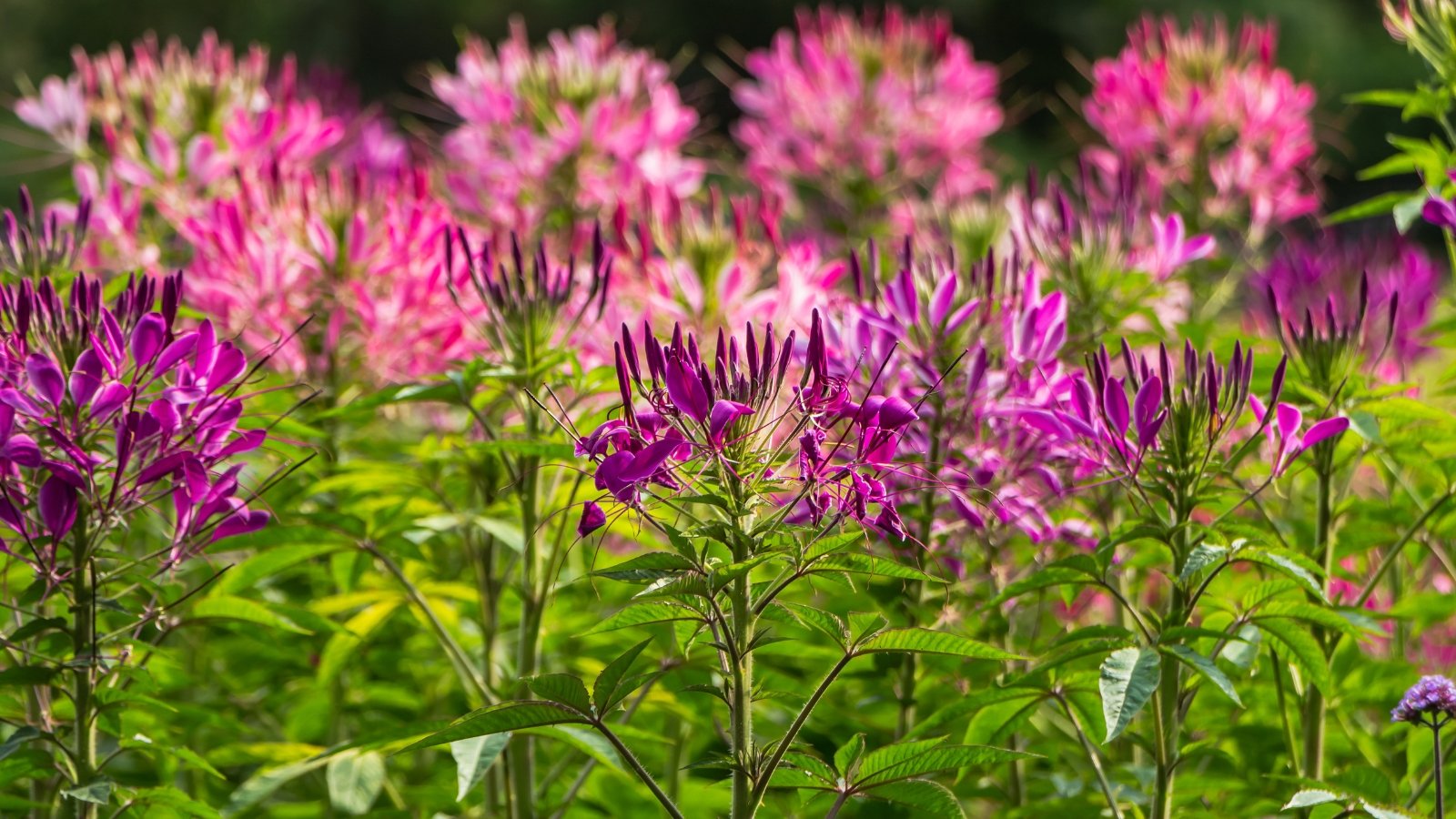

Also known as ‘spider plant’ or ‘spider flower,’ cleome is grown as an annual in most of the world. This South American native gained popularity during the Victorian era for its exotic personality. It features six to eight-inch racemes and extra-long stamen resembling spider legs. Coloring is typically white, pink, red, or purple.
Leaf structure is dense and bushy, particularly after pinching. Try ‘Fountain Blend’ for multi-colored blooms and a three to five-foot height. This plant benefits from being contained by a rigid living border.
Verbena
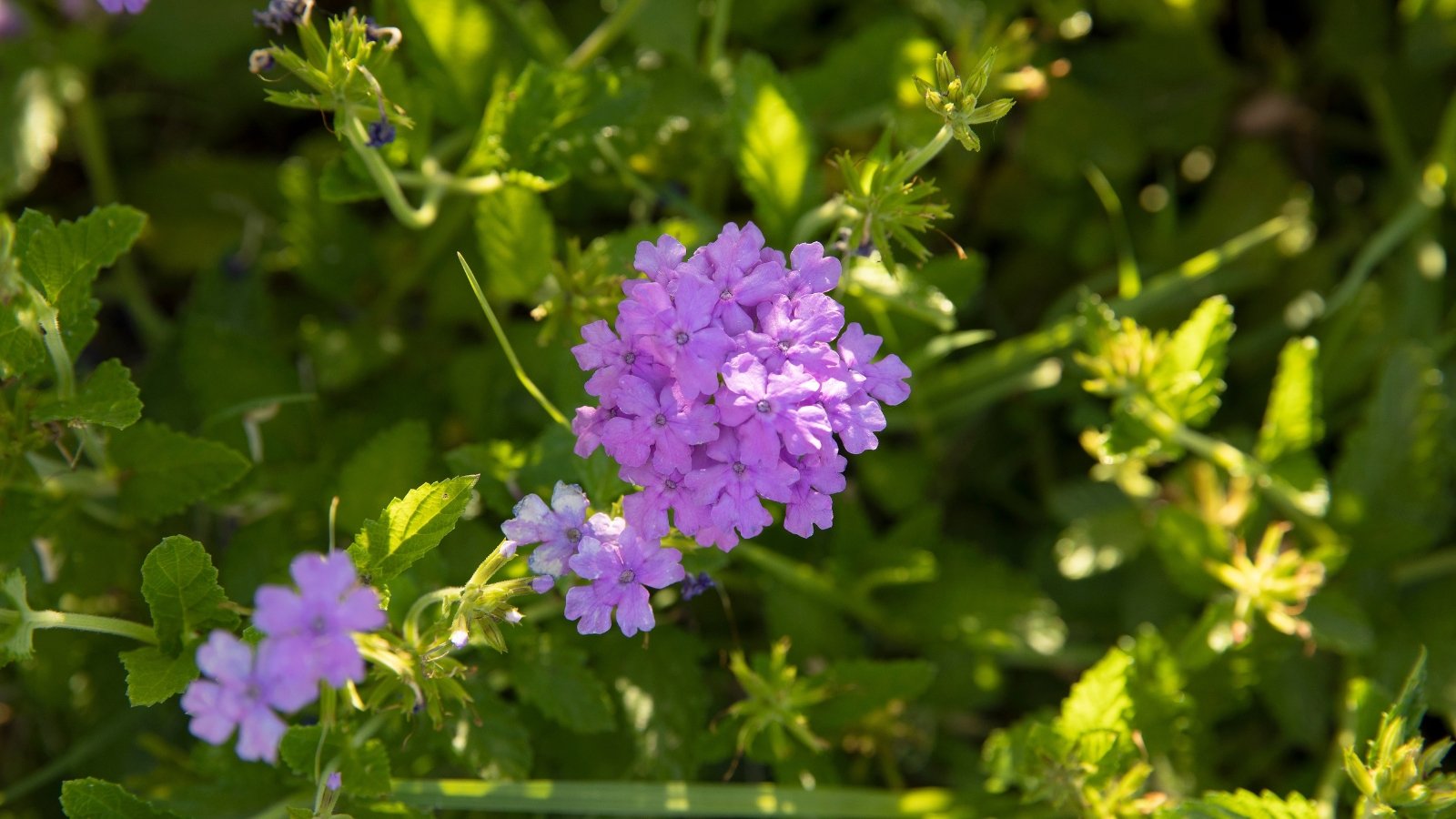

This North American native has a wide-spreading habit. It produces mounds of showy, pom-shaped blooms in shades of purple and pink. It works well as a filler plant in an upright Victorian urn. Try it as a bedding plant in a parterre or divided flower garden, too.
For a tall, leggy variety to plant behind a row of evergreen orbs, try ‘Brazilian Vervain.’ Work some trailing ‘Whiteout’ into a porch container to play a neutral spiller role.
Pansy
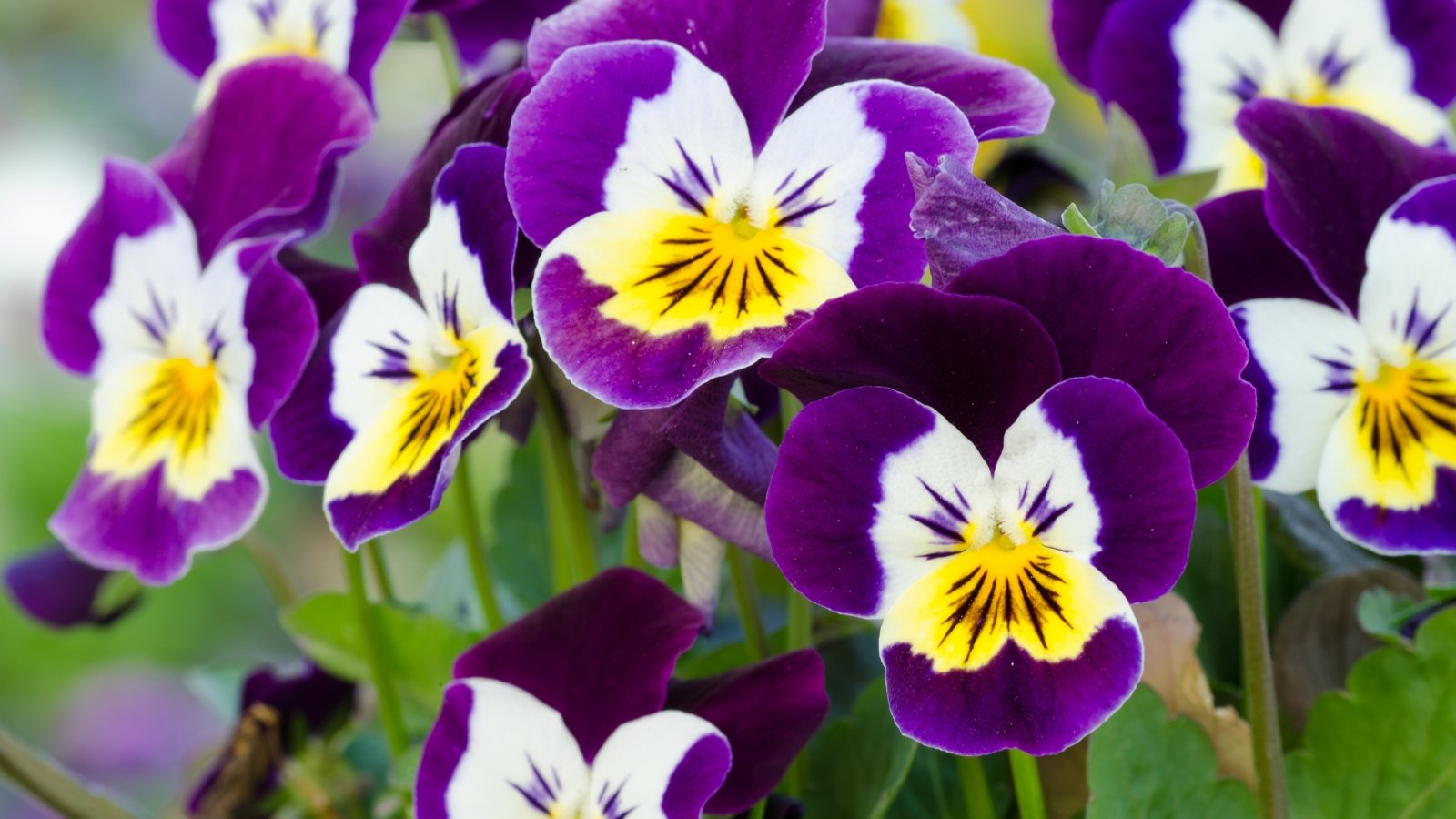

Although it’s perennial (or biennial) in zones 6-10, pansy has a short lifespan. It’s generally considered an annual flower. Victorian gardens prized this perky plant for its cheerful personality, early spring color, and tolerance for cool weather.
Like many of the other annuals on this list, pansy wows in a large mass as a bedding plant. It also makes a sweet statement in the container garden. Since Victorian gardening favored a broad palette of color, you can’t go wrong with any cultivar from this plant group.
English Ivy
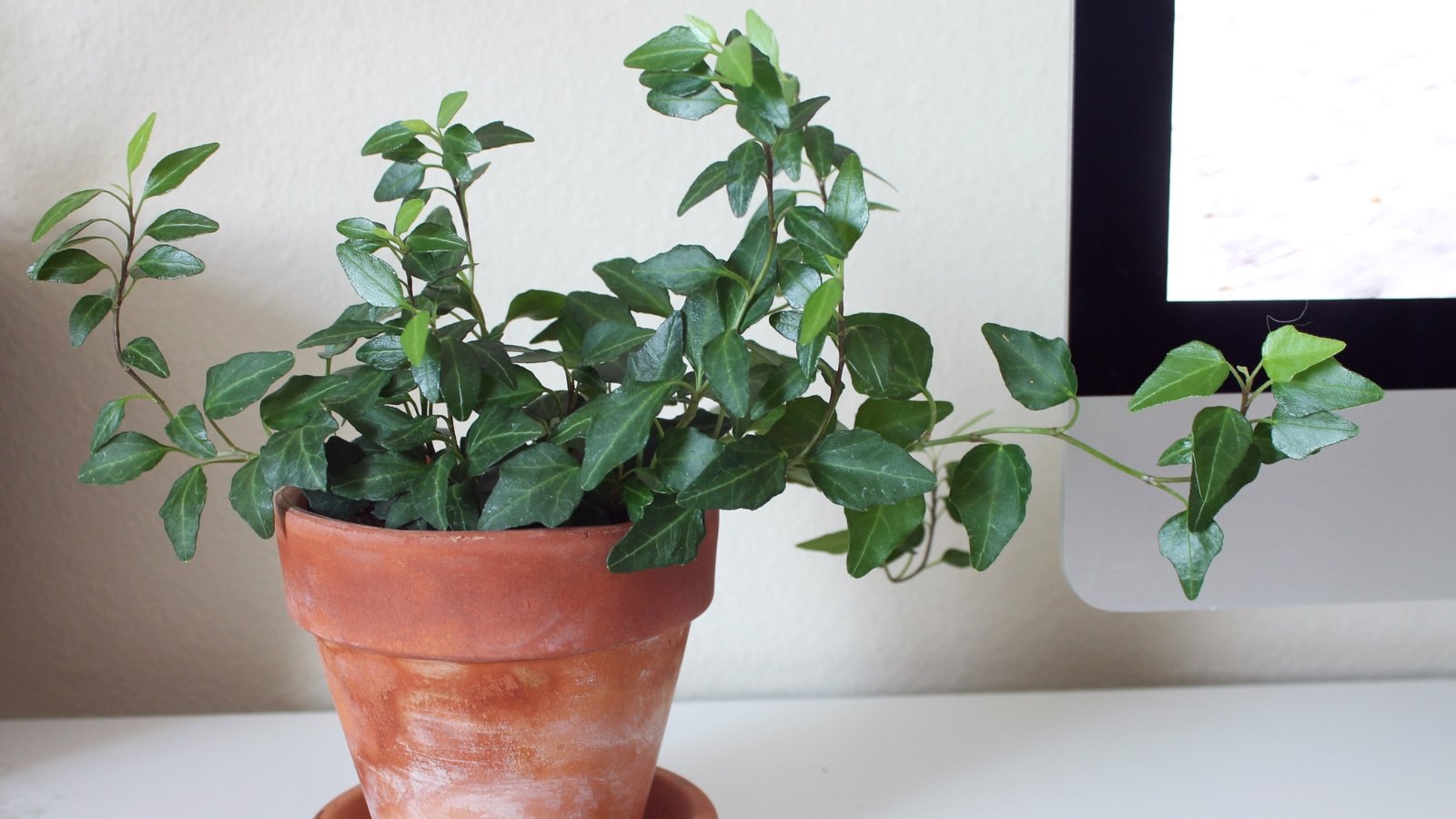

The perfect plant to link a home with its garden, English ivy was allowed to ramble freely up a home’s exterior walls during the Victorian era. Ivy was considered a symbol of immortality.
When planning a modern-day Victorian garden, plant ivy where it can be controlled and maintained. It spreads quickly and is considered invasive in many regions. Try ‘Glacier’ for its attractive gray-green leaves with white margins or ‘Needlepoint’ for its delicate foliage and bright green coloring.
Rose
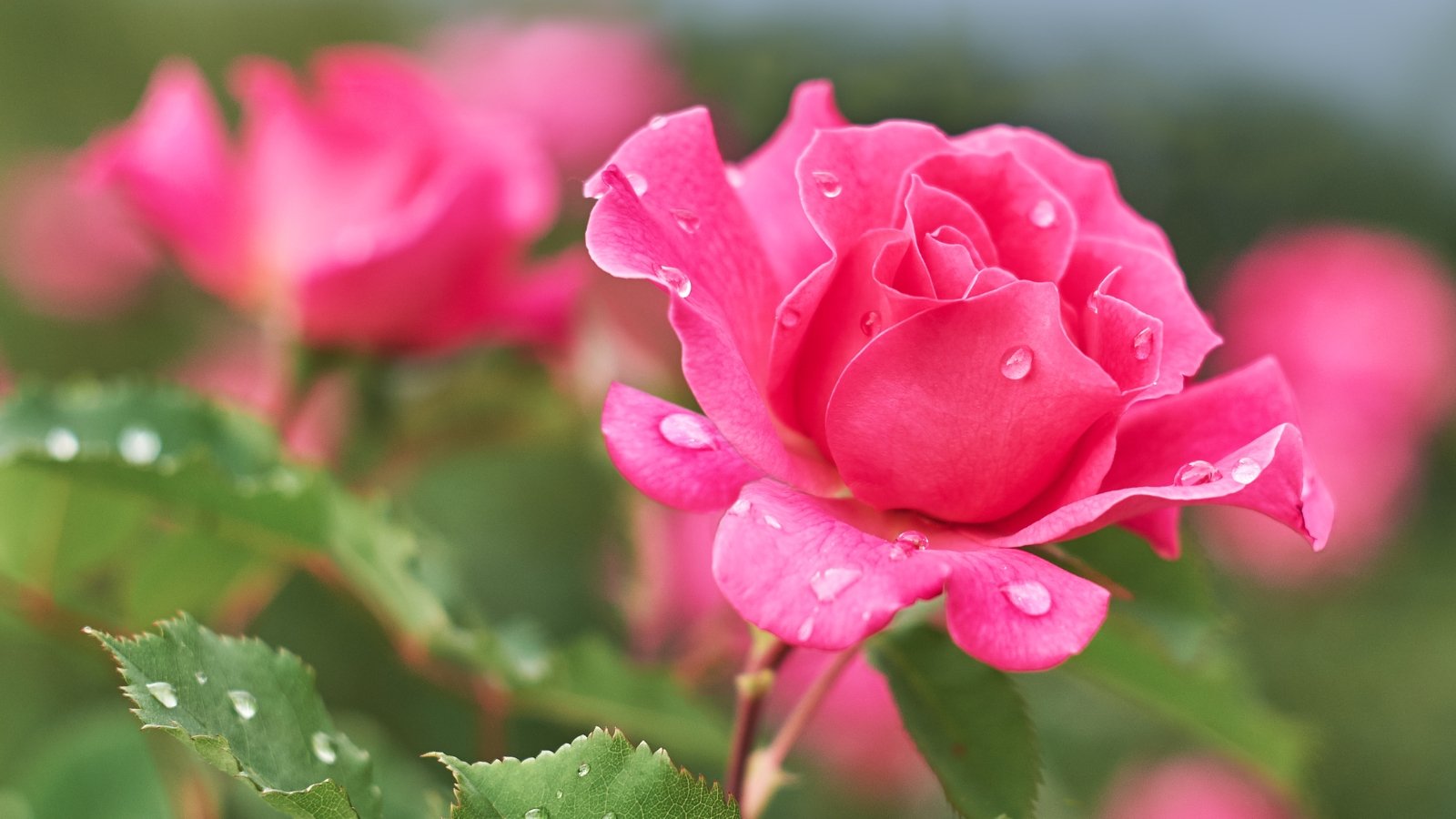

A symbol of classic love, roses were featured heavily in the Victorian landscape. As the gardening bug began to spread through Europe, green thumbs everywhere were learning to prune and control these formerly wild shrubs. Available in a rainbow of colors and a wide range of sizes, roses contributed to the overall vibe of excess and exuberance.
With long, prickled stems that often create a leggy stature, roses look wonderful when fronted by a low hedge of boxwood or yew. Use smaller floribunda roses for a diminutive garden scale or climbing roses to create an outdoor living room ‘wall.’
Rhododendron
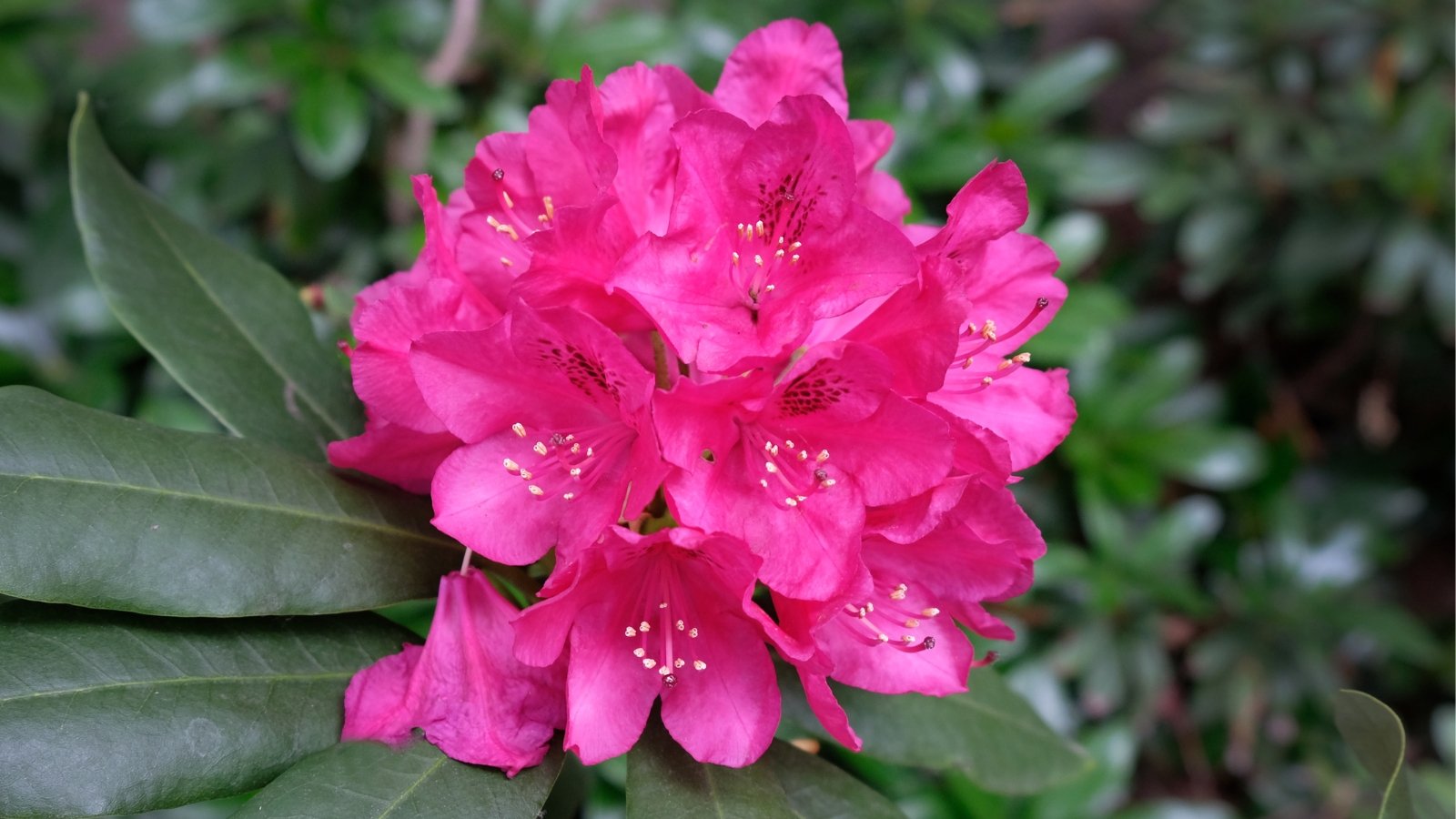

Rhododendrons lend early spring interest to the Victorian garden. Offering large masses of five-lobed flowers in colors of pink, white, red, and purple, rhododendron plants are native to the mountainous regions of Asia and Australia and were coveted for their profusion of flowers.
As an understory plant, azaleas thrive with filtered sunlight, which makes them an ideal choice for a Victorian garden in the proximity of a mature shade tree. Try ‘Strawberry Ice’ for deep pink buds and peachy-yellow flowers or ‘Southern Indica’ for multiple flower colors on a single plant.
Parlor Palm
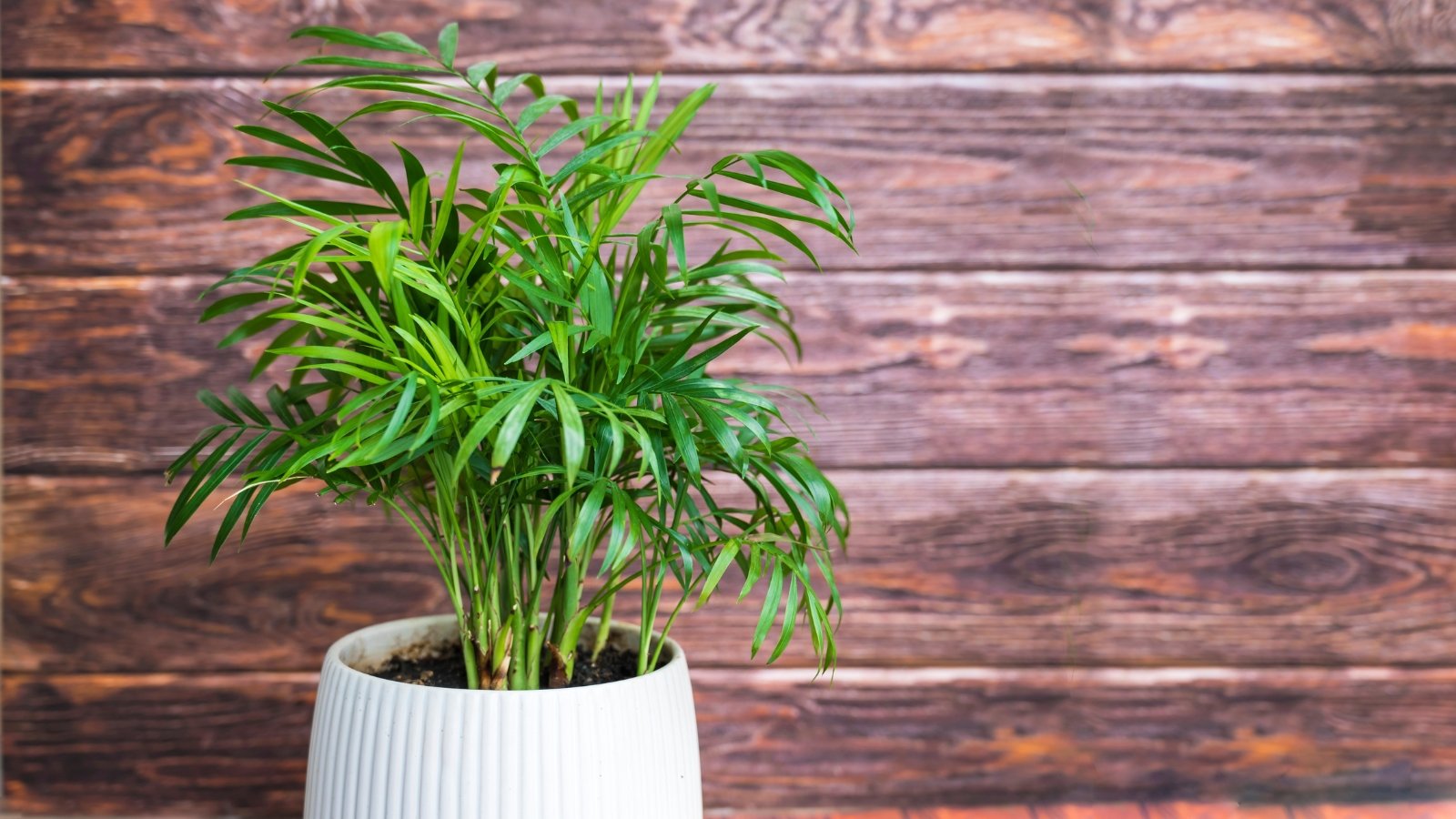

As travel to exotic lands became more available to them, gardeners in the Victorian era were obsessed with all things tropical. Anxious to include some plants from faraway regions in the landscape, gardeners gravitated toward plants like parlor palm, which had dark evergreen foliage and a firm upright structure.
Partial to locations with minimal sunshine, parlor palms are also known as bar room plants for their high shade tolerance. Use them for east-facing front porch urns that may be sunny only in the morning. Try ‘Variegata’ for vibrant white leaf margins and pair it with a colorful spiller plant for a lush, Victorian-worthy display.
Fern
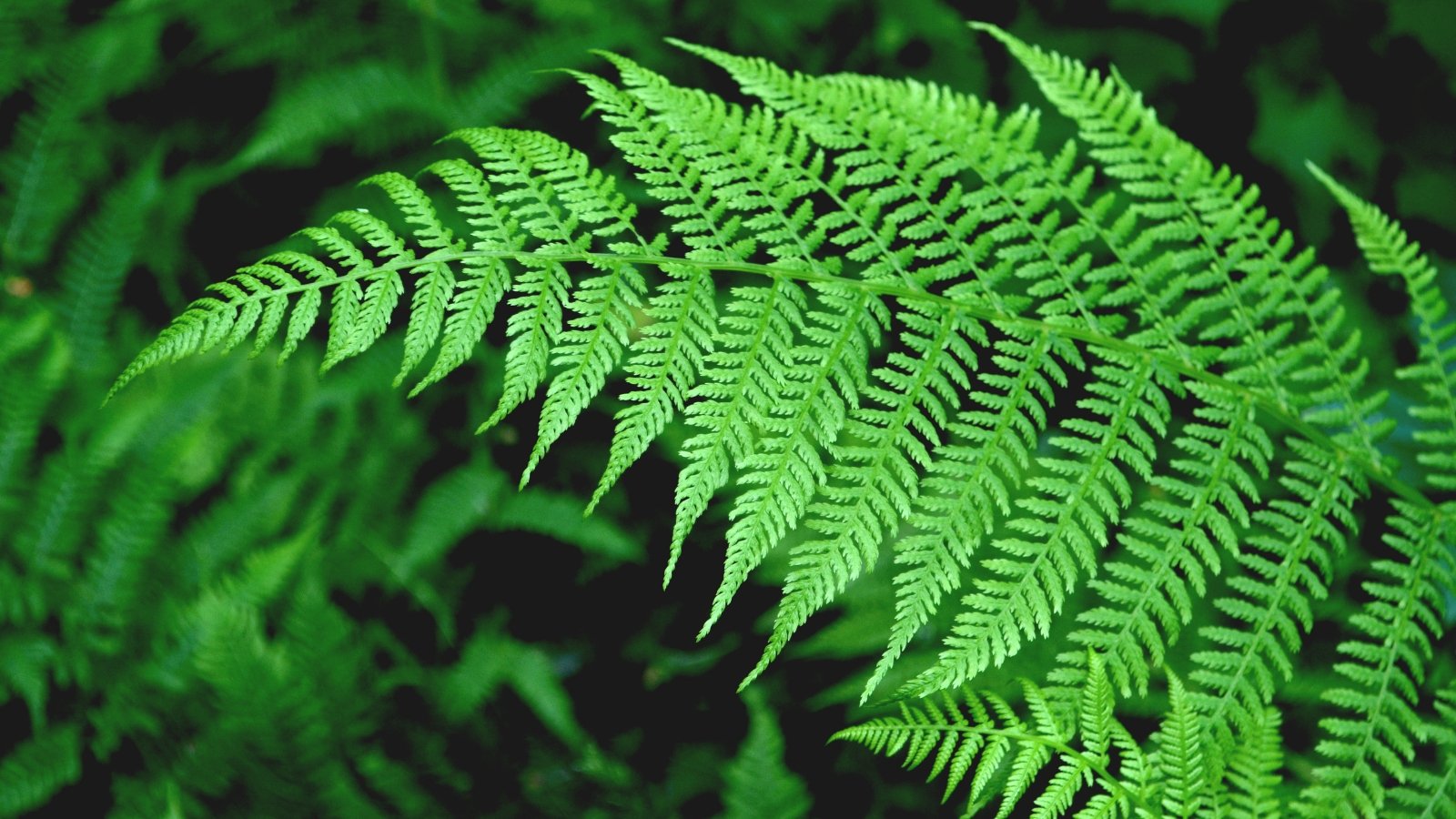

In the mid-1800s, Victorian gardeners entered a period known as the ‘fern craze.’ With world travel and literature opening eyes to this unique plant form, an obsession with all things curled, twisted, and fringed took root.
Plant ‘Giant Chain Fern,’ which reaches heights of eight feet, as an exotic anchor in your maze garden. Work ‘Dwarf Maiden Hair, into a small pot on the front porch for a sweet accent, or use ‘Ostrich Fern’ to soften an ugly wall or building plane that doesn’t get much sun.
Coleus
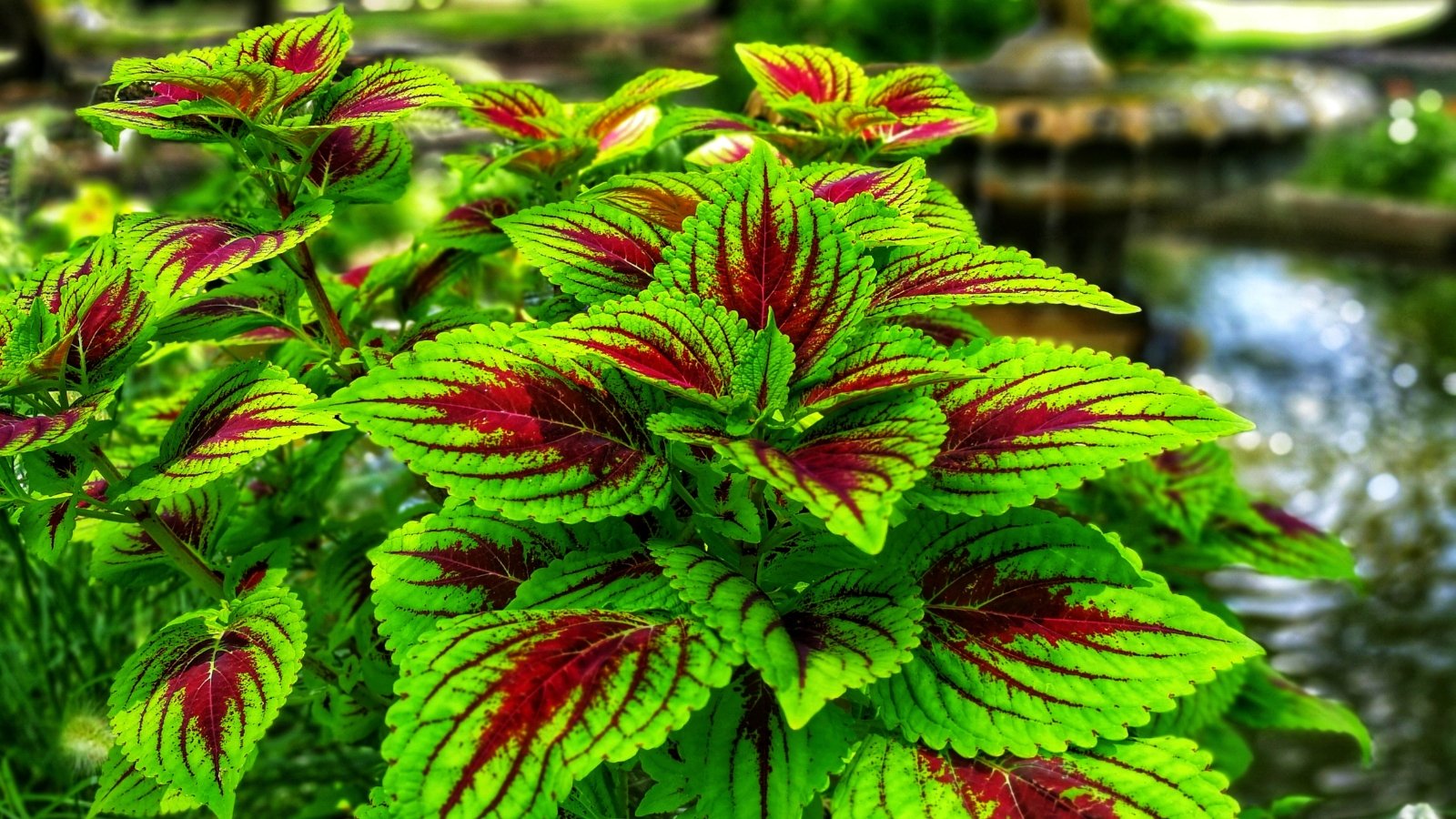

Hardy only in warmer zones but propagated easily by seed or cutting, coleus plants are another Asian tropical native that Victorian gardeners were drawn to. With large, showy leaves in a multitude of colors and a high shade tolerance, coleus works well on the northern side of the home or in the shade of a mature tree or shrub. Try ‘Dragonheart’ for a festive red and green container display or ‘Lime Time’ for a mass of chartreuse in a divided bed.
Lavender
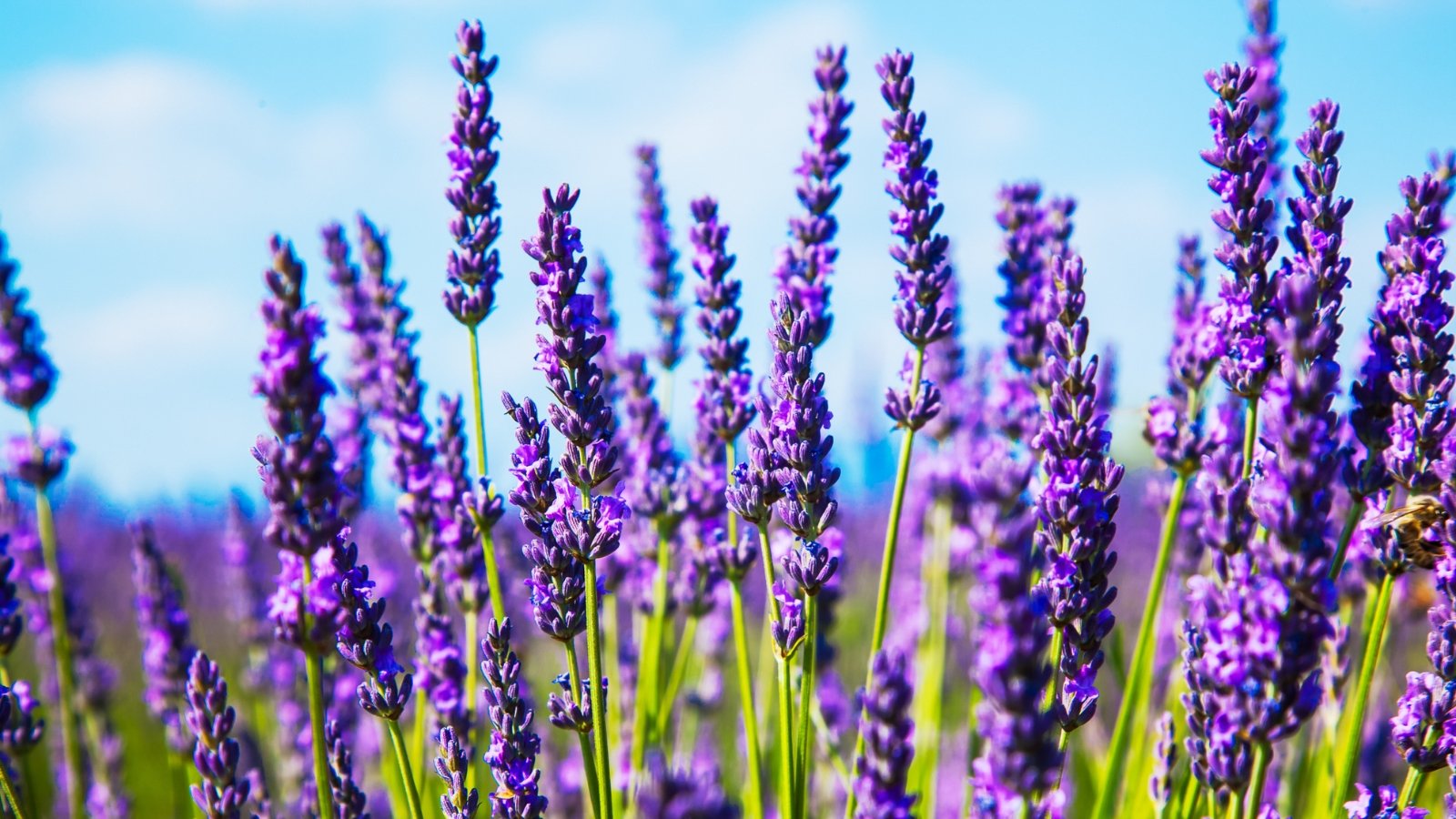

A fascination with strong, exotic scents attracted Victorian gardeners to plants like lavender. With an upright fan shape and spikes of whorled flowers in shades of purple or white, lavender holds its own as a specimen plant or a linear garden element.
Blooming all summer and filling the garden air with its distinct aroma, lavender holds a special place in the Victorian gardener’s heart. Plant ‘Hidcote’ in a small-scale potager garden or ‘Provence’ for a little more height and a bushy habit.
Rosemary
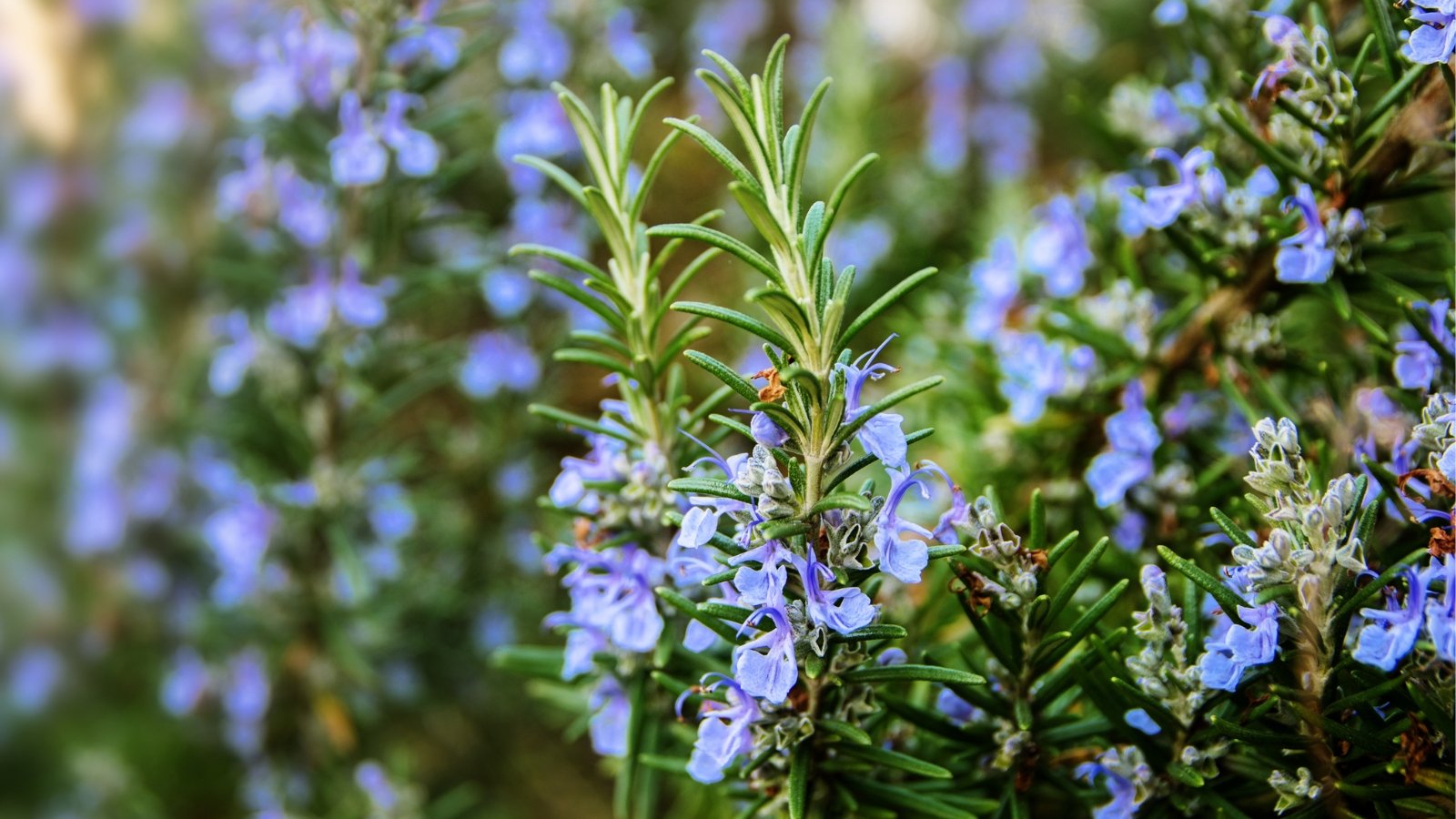

Another kitchen garden darling, rosemary provides both form and function in the Victorian landscape. Its long-needled foliage was valued for its strong, spicy scent and used for both potpourri and cooking purposes.
Its flowers attract an array of pollinators and birds to the garden. Plant ‘Arpo’ if you’re looking for tall, vertical structure or ‘Prostratus’ for a low-creeping ground cover with bright purple flowers.
Thyme
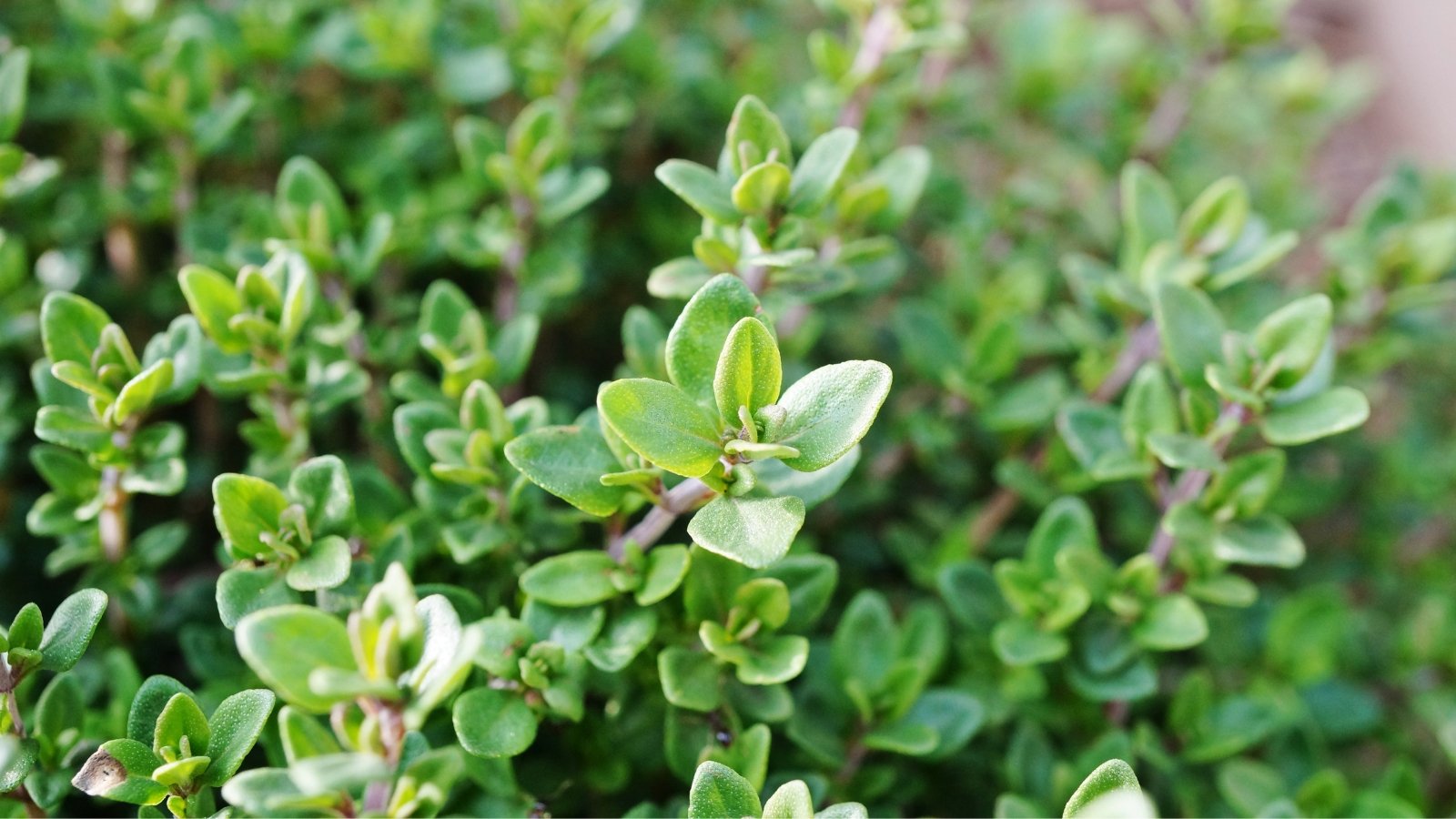

Victorian gardeners prized thyme for both its medicinal and culinary properties. Native to southwest Europe and Italy, thyme is an aromatic herb with rolled blue-green foliage and whorls of white or purple flowers in mid-summer.
Some Victorian gardens included a ‘rockery,’ which featured stones or gathered hardscapes from their travels. Thyme was often employed to cover the ground as it spreads quickly around small objects to cover the earth. ‘Narrow Leaf French’ has white flowers and fine gray leaves. ‘Orange Balsam’ has a distinct orange scent and narrow, attractive leaves.
Hyacinth
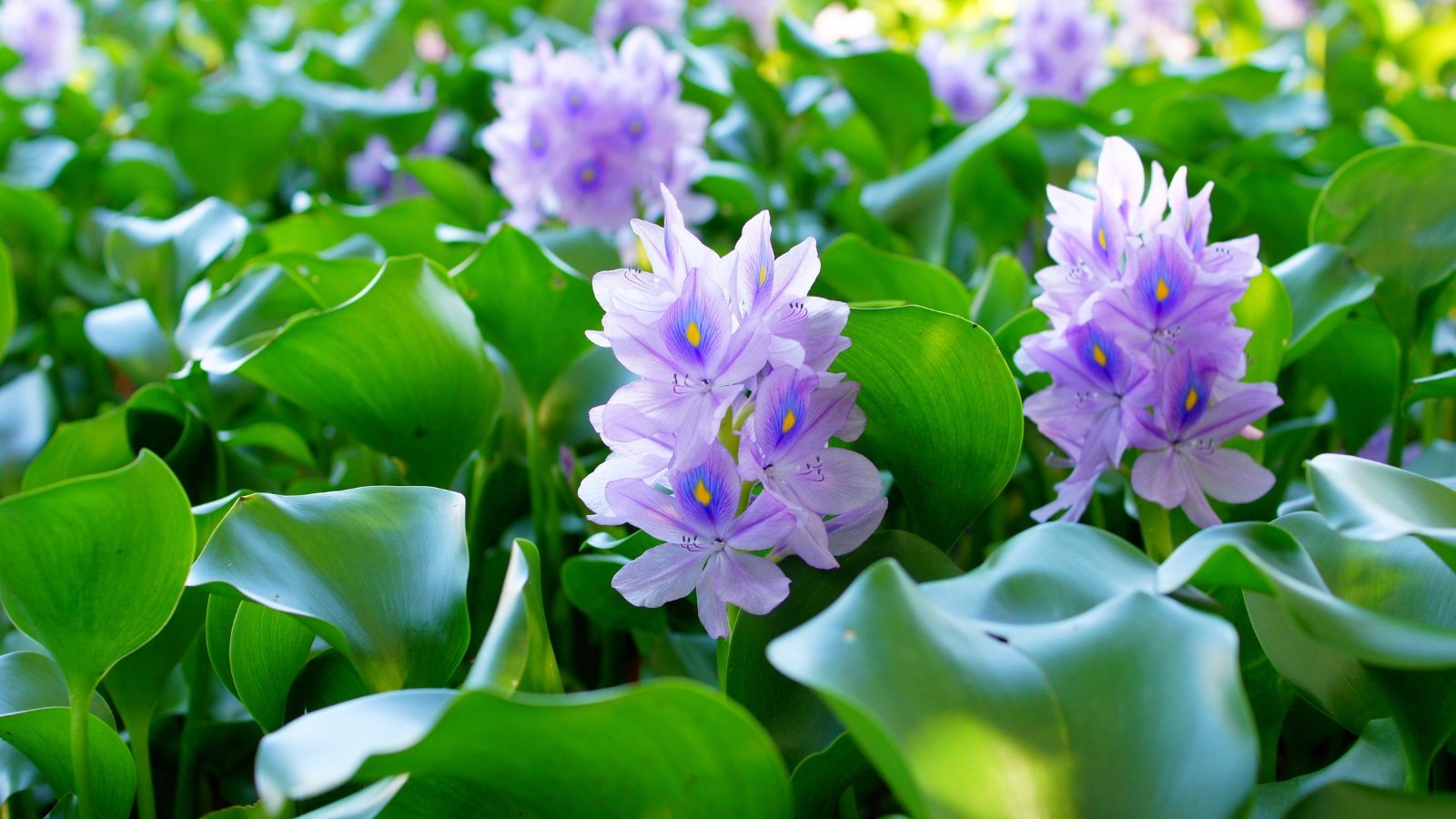

No Victorian garden would be complete without a riot of spring color. In addition to tulips and other tried and true flowering bulbs, hyacinths were popular for their early bloom time, large flower size, and strong scent. Cultivated from the Mediterranean and parts of Turkey, hyacinth flowers were considered exotic and given a special place near many Victorian entryways.
Offering sturdy spikes of complex, cylindrical flowers, hyacinths bloom for up to three weeks and will form bulb offshoots below ground. This creates a cluster effect over time and distinct pockets of spring color. Choose from hundreds of hybrid cultivars in shades of pink, white, red, and purple.
Daffodil
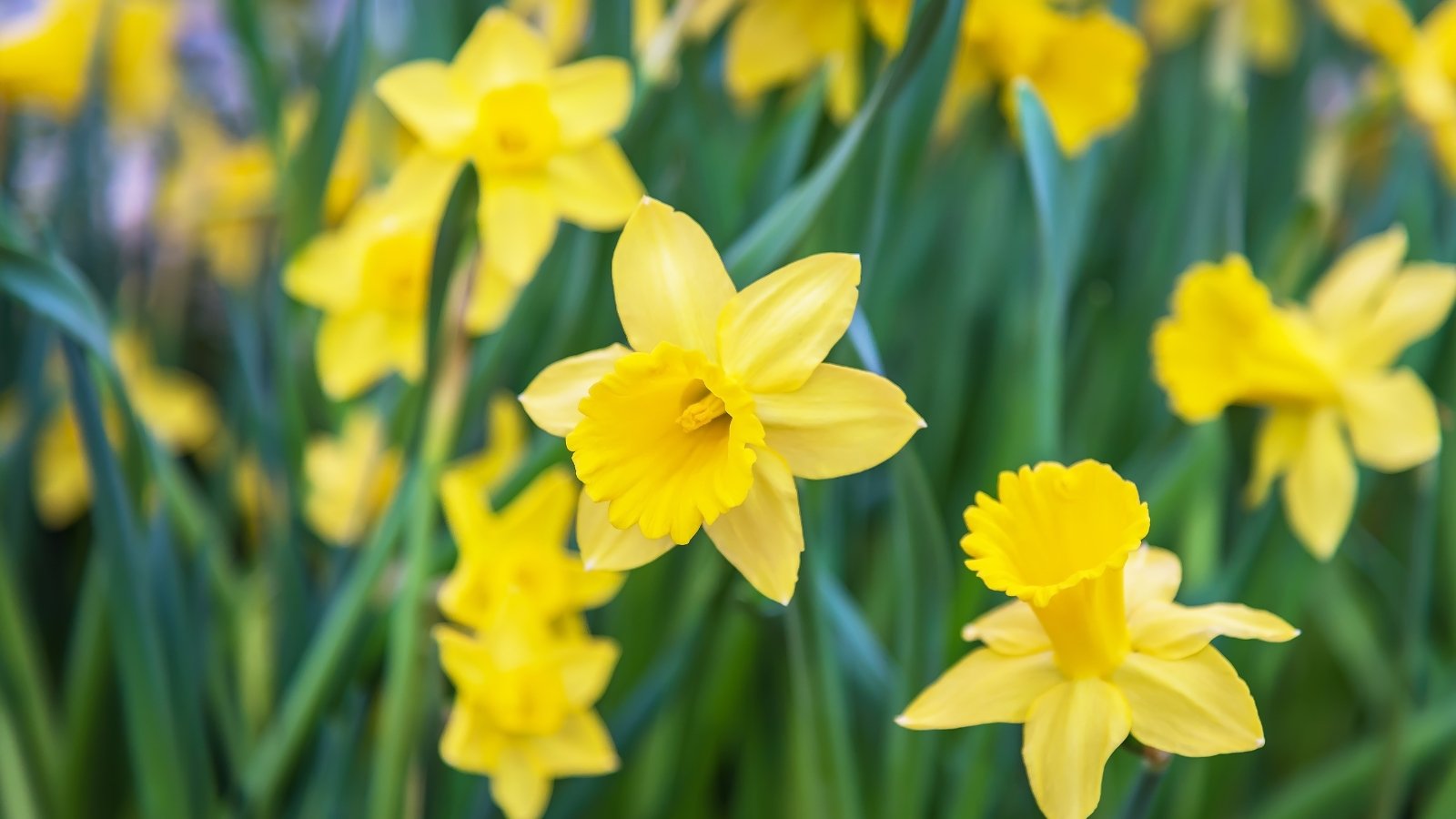

Offering masses of bright, trumpet-shaped flowers in spring, daffodils multiply quickly and bring a special kind of joy to the garden. While early daffodil cultivars were primarily yellow in color, newer hybrids now offer options in pink, white, orange, and yellow.
Plant ‘Dreamlight’ in your parterre garden to hold the space until your herbs pop through, or work ‘Orange Progress’ into a container arrangement for a fresh burst of orange and yellow.
Final Thoughts
This is just a sampling of the plants that are often used in Victorian garden design. Since the philosophy behind the movement was inclusive of flowers and foliage plants from all over the world, almost anything goes once your evergreen structure is in place. Begin with a layout that includes firm borders and fill in with whatever you find appealing, and your garden will surely hit the Victorian notes you desire.





